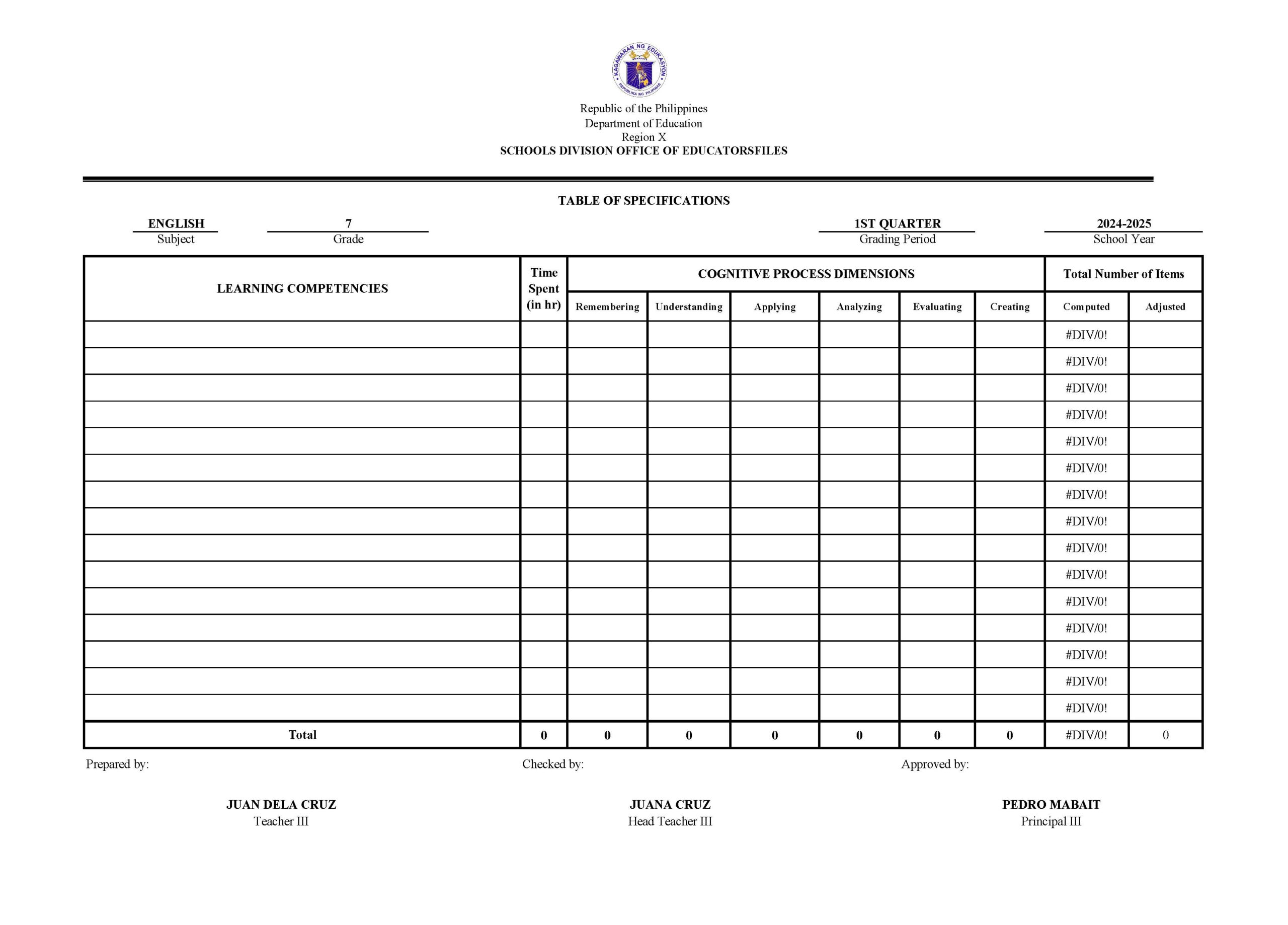Understanding the Table of Specifications
A Table of Specifications (TOS) is a blueprint for creating assessments. It ensures that the test items align with the learning objectives and curriculum standards. A well-constructed TOS helps in maintaining fairness, validity, and reliability of the assessment.
Key Components of a TOS Template
- Learning Competencies: These are the specific skills or knowledge students are expected to acquire at the end of a learning unit.
- Time Spent (in hr): This indicates the amount of time dedicated to teaching each learning competency.
- Cognitive Process Dimensions: These refer to the mental processes involved in learning and problem-solving. Common cognitive dimensions include:
- Remembering: Recall and recognition of facts, terms, and concepts
- Understanding: Understanding the meaning of material
- Applying: Using knowledge in new situations
- Analyzing: Breaking down information into parts
- Evaluating: Judging the value or worth of ideas
- Creating: Combining elements to create something new
- Total Number of Items (Computed and Adjusted): This is the total number of test items allocated to each learning competency, calculated based on the time spent and cognitive level. The adjusted number may vary depending on the specific requirements or constraints of the assessment.

Tips for Creating an Effective TOS
- Align with Curriculum Standards: Ensure that the learning competencies and cognitive levels are consistent with the curriculum guidelines.
- Consider Bloom’s Taxonomy: Use Bloom’s Taxonomy as a framework for categorizing cognitive processes.
- Allocate Items Proportionally: Distribute the number of items based on the importance and complexity of each learning competency.
- Adjust for Difficulty Level: Consider the difficulty level of the test and adjust the number of items accordingly.
- Review and Revise: Regularly review and revise the TOS to ensure its accuracy and relevance.
By creating a comprehensive and well-structured TOS, you can develop assessments that accurately measure student learning and provide valuable feedback for both students and teachers.
